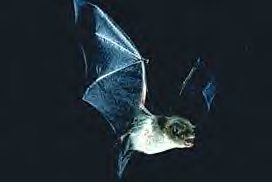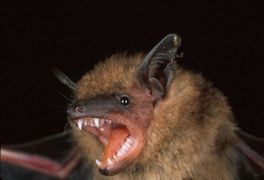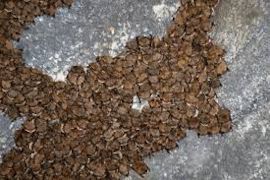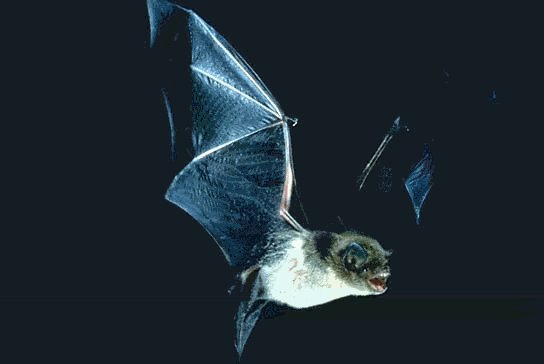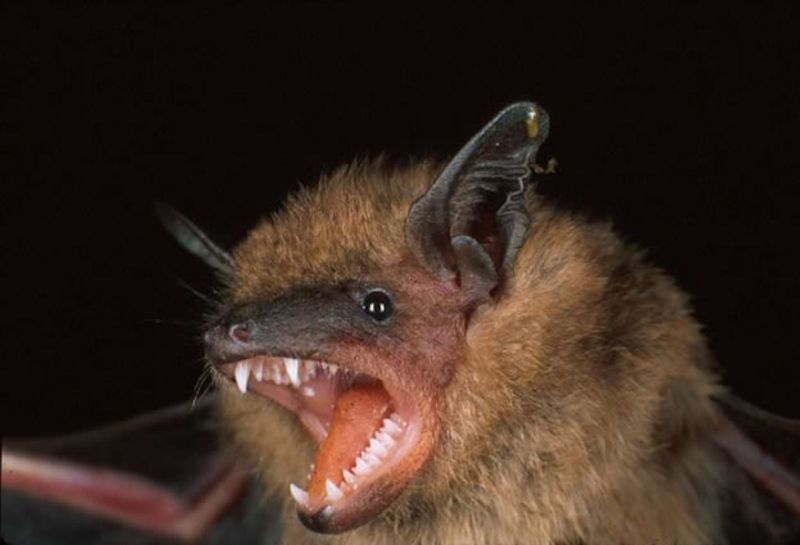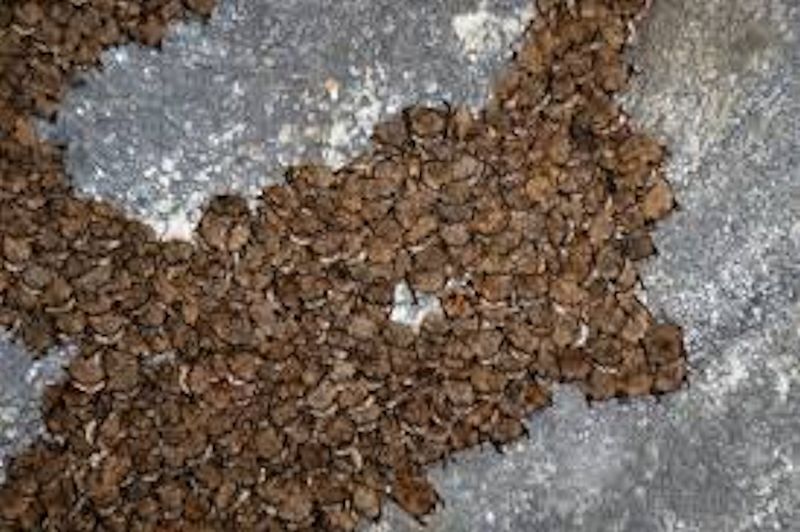Bats
>Description
Variable shades of glossy brown above, with tips of hairs burnished brown; buff below. Tragus rounded and short (about 1/4" or 7–8 mm). Calcar lacks keel or sometimes has weak keel. Hairs on toes project beyond ends of toes. Length 3 1/8"–3 5/8" (79–93 mm); Weight 1/16–1/2 oz (3.1–14.4 g).
Similar Species
In East, Southeastern Myotis often has white belly, as well as sagittal crest on skull; Indiana Myotis has prominent keel on calcar, and hairs do not project beyond ends of toes; Keen’s Myotis has longer ears and longer, thinner tragus. In West, Long-legged and California myotises have keeled calcar; Long-eared and Southwestern myotises have longer ears and longer, thinner tragus; Yuma Myotis has slightly shorter forearms and duller fur.
Breeding
Mates in fall and sometimes again in winter or spring. Sperm remains in female’s reproductive tract until spring, when eggs are fertilized. 1 young born late May–early July, usually in a building, occasionally in a hollow tree.
Discussion
The Little Brown Myotis, whose
nitrate-rich guano was sold as fertilizer in the first half of this
century, is one of the most common bats in the U.S. and Canada.
Nursery colonies begin forming in April or May and disperse from
late July through October. They may number in the thousands (one
observed maternity colony had 6,700 individuals, others have had
4,000). The first two to three days after the young are born, their
mothers suckle them constantly, except while foraging. Until they
are ready to fly on their own, at about four weeks, the young remain
in the roost while the mother hunts for small insects, especially
flies and moths. Bats usually do not carry their young in flight.
However, if disturbed, the mother may take flight with the young,
carrying it crosswise, with the infant’s mouth grasping one teat and
its hindlegs tucked under the opposite armpit. Besides echolocation
clicks, this species produces warning "honks" when on a collision
course with other bats during feeding or near roosts. In the fall,
these bats may fly several hundred miles to a hibernating site; they
often can be seen swarming at cave entrances. From September,
October, or early November through March or April, they hibernate in
irregular clusters, some tight, some loose. They wake an average of
once every two weeks during hibernation and may fly about outdoors
on warm winter nights, but without feeding. They store about 1/16
ounce (2 g) of fat as winter sustenance, using nearly three-quarters
of it during winter awakenings and emergence. The remainder must
sustain them through the winter.

